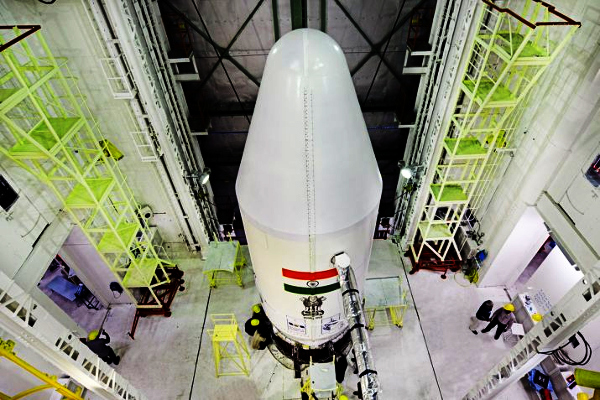Indian Space Research Organisation (Isro) will launch the first satellite of this year from Sriharikota on November 6 when its PSLV-C 49 rocket will lift off with an earth observation (surveillance) satellite Risat-2BR2 and 10 foreign commercial satellites from the first launchpad.
It is keeping November 7 and 8 as two days of backup launch dates in case of any delay, according to a notice to airmen (NOTAM). This will be Isro’s first satellite launch amid the Covid-19 pandemic, which has slowed down all space activities since March. The agency is also gearing up for the much-awaited first demonstration test of its new rocket Small Satellite Launch Vehicle (SSLV) or mini-PSLV by December.
Risat-2BR2 is an advanced series of the earth observation satellite whose synthetic aperture radar (SAR) has an all-weather and day-and-night observation capability. It can also see through clouds. This new ‘eye in the sky’ will boost the military’s surveillance capability from space and help the security forces keep a hawk eye on the borders amid the LAC troop stand-off with China. Besides its surveillance role, Risat-2BR2 will also be used for civil applications like in agriculture, forestry, soil moisture, geology, coastal monitoring and flood monitoring.
Soon after the PSLV-C49 mission, Isro is targeting to launch PSLV-C50 mission carrying GSAT-12R communication satellite in December.
However, the much-awaited launch of the first SSLV by December will generate a lot of interest among space enthusiasts as this is a vehicle-on-demand made especially for satellite customers. Post-PSLV-C49 launch, the first launchpad set-up has to be reconfigured to suit the shorter SSLV launch. The test on the SSLV motor is scheduled for November.
An SSLV will have a three-stage engine rocket all powered by solid fuel. The mini-launcher can be assembled in just 3-5 days as compared to 30-40 days for a normal-size rocket. The 34-metre rocket will have a lift-off mass of 120 tonnes and will have the capability for multiple satellite launches at different orbits. However, an SSLV can carry a maximum of 500 kg payload to the low earth orbit (LEO) and 300 kg to the sun-synchronous orbit (SSO). As was reported by TOI earlier, the first commercial SSLV has already been booked for carrying an American payload much before its birth.
The last satellite Isro had launched from Indian soil was PSLV-C48, which also carried a surveillance satellite, Risat-2BR1, on December 11, 2019. The agency’s communication satellite Gsat-30 was the only satellite launched this year on January 17 but from the European spaceport in French Guiana.
Source: ToI
You may also like
-
New Heat-Based Approach To Cancer Treatment Can Reduce Chemotherapy Doses
-
Scientists Take A Major Step Towards Unification Of Classical & Quantum Gravity
-
India Graphene Engineering and Innovation Centre (IGEIC) Under the Vision of Viksit Bharat@2047 Launched
-
New High-Performance Gas Sensor can Monitor Low Level Nitrogen Oxides Pollution
-
Antidepressant Drug can be Repurposed for Treating Breast Cancer
